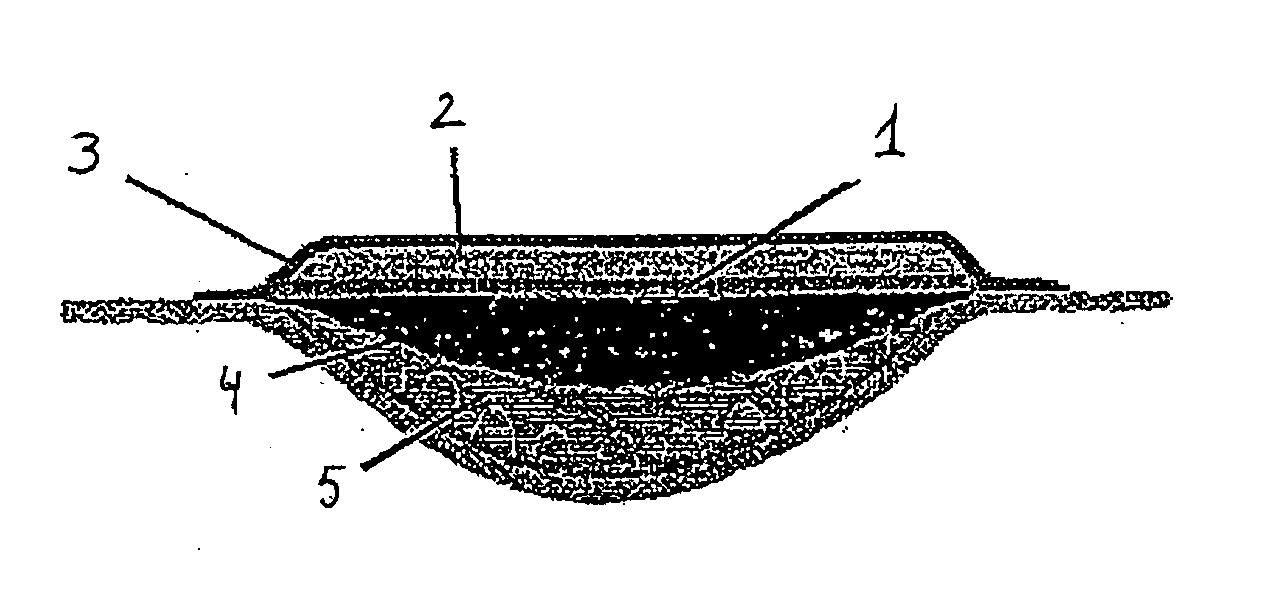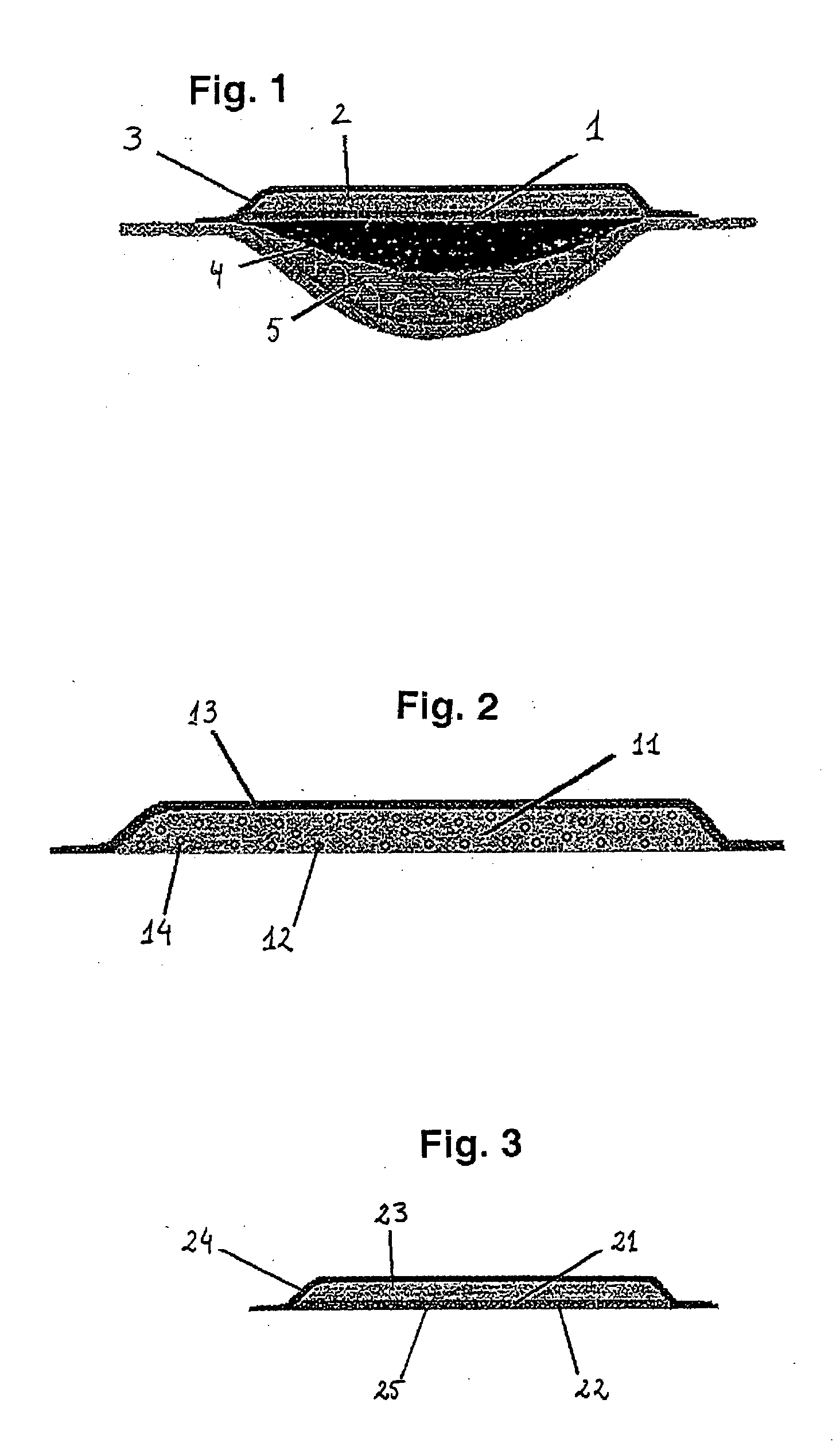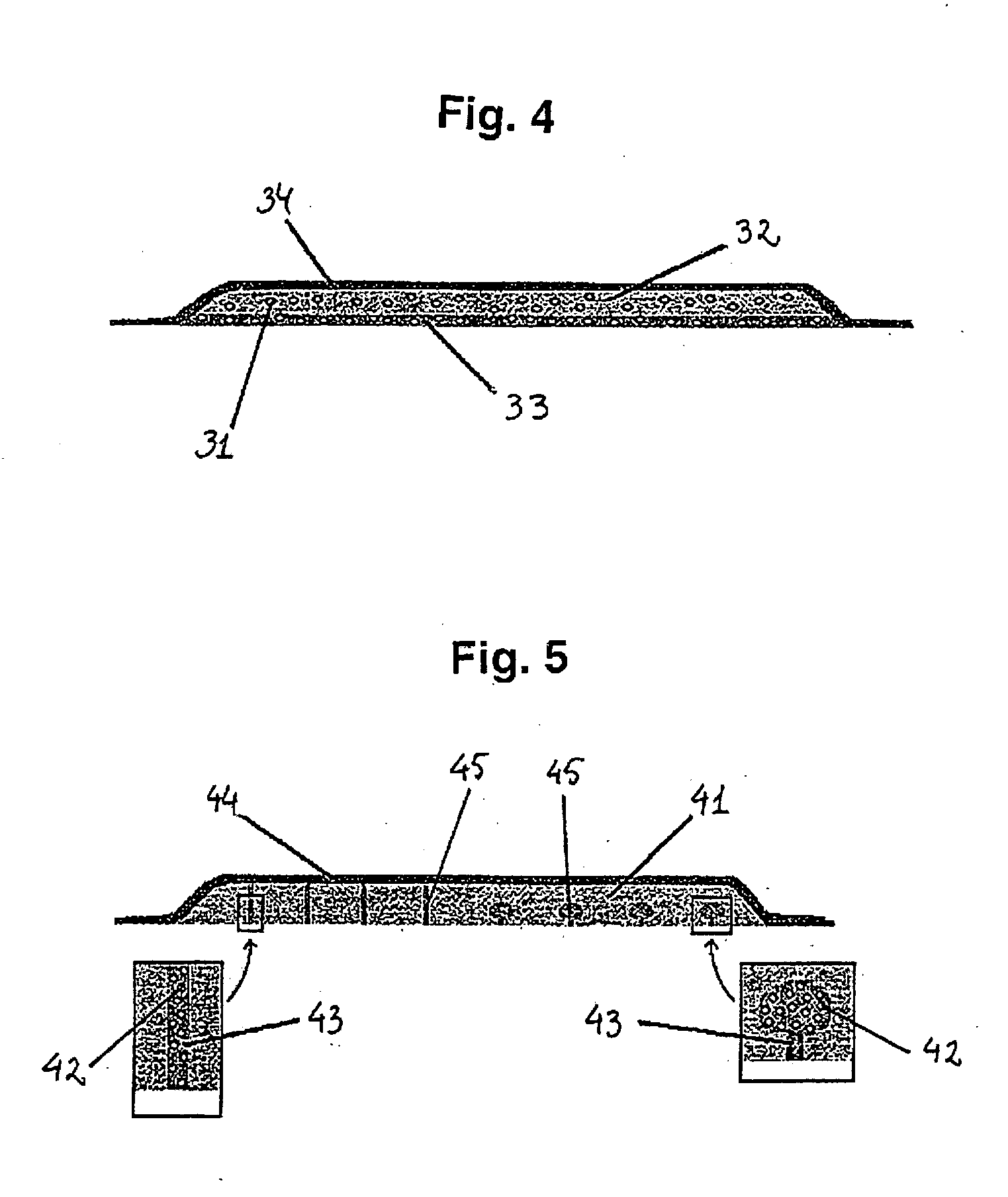Dressing
a dressing and dressing technology, applied in the field of dressing, can solve the problems of preventing the upper layer of the dressing from functioning, affecting the healing effect of wounds, and necrosis or non-viable tissue of wounds, and achieve the effect of easy debridement of chronic wounds
- Summary
- Abstract
- Description
- Claims
- Application Information
AI Technical Summary
Benefits of technology
Problems solved by technology
Method used
Image
Examples
example 1
Degradable Film on Dressing
[0070] A dressing of the kind shown in FIG. 1 was prepared by mixing 8 g Hypol2060 (Dow Chemical Company), 12 g of Hypol 2002 and 20 g of water with 1% w / w Pluronic 62 (BASF AG). The materials were mixed together for approximately 15 seconds. The liquid was poured into a mould and allowed to react for 10 minutes. The resulting foam sheet was dried in an oven at 70° C. for 30 minutes and had a thickness of 3 mm. A polyurethane (PU) backing film was laminated on the top of the foam, thus sealing the dressing from outside. The water permeability of the backing film was 500 g pr m2 pr hour. The foam was supporting the backing film physically and comprised the exudates absorbing properties of the dressing.
[0071] A polymer film was casted on a silicone release liner 1022 (Scotch Pak, 3M Medica) using a polymer solution of PVP K90 (5% w / w), K25 (24%), Permulen (5% w / w), Polyurethane, DC-01-1628 (24% w / w), PEG 300 (37% w / w) and papain (5% w / w). When the polymer ...
example 2a
Enzyme Coated in HPC and Embedded in a Polyurethane Foam
[0072] A dressing of the kind shown in FIG. 2 was prepared using 500 g of an aqueous solution containing papain (2% w / w) mixed with 10 g of hydroxypropylcellulose (HPC) and spray dried on a Niro FSD 6.5 spray drier, resulting in particles comprising of a homogenous blend of polymer and enzyme in a ratio of 1:1. The mean particles size was 100 μm. A polyurethane foam was prepared as described in Example 1, however the particles were added during mixing of the foam components. In the refined release-assay substantially all the enzyme was released with no significant loss of activity compared to control. 95% of the enzyme was released within 24 hours in a constant release pattern.
example 2b
Enzyme Coated in HPC and Embedded in a Polyurethane Foam
[0073] As in 2A, but instead 20 gr. of HPC was used, thus obtaining a ratio of 2:1 between the polymer and the enzyme. Approximately 95% of the enzyme was released within 36 hours in a constant release pattern.
PUM
 Login to View More
Login to View More Abstract
Description
Claims
Application Information
 Login to View More
Login to View More - R&D
- Intellectual Property
- Life Sciences
- Materials
- Tech Scout
- Unparalleled Data Quality
- Higher Quality Content
- 60% Fewer Hallucinations
Browse by: Latest US Patents, China's latest patents, Technical Efficacy Thesaurus, Application Domain, Technology Topic, Popular Technical Reports.
© 2025 PatSnap. All rights reserved.Legal|Privacy policy|Modern Slavery Act Transparency Statement|Sitemap|About US| Contact US: help@patsnap.com



